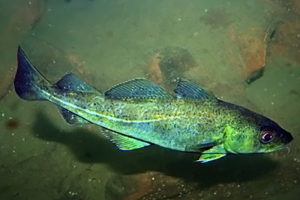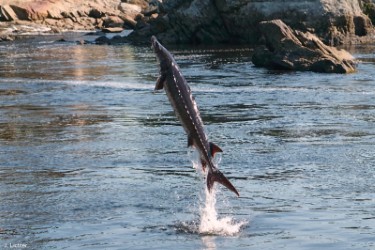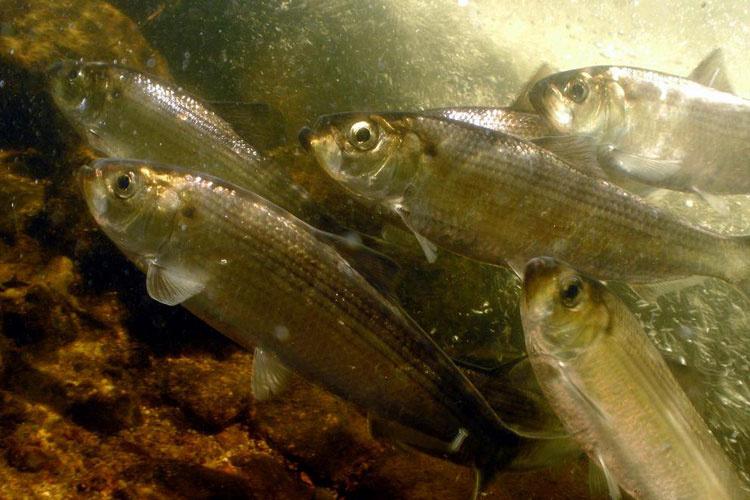River Ecology
Overview
The ecology of the Androscoggin River is a complex community with far too many species and interactions to catalog entirely. However, here is some general information about important species in the Androscoggin River ecosystem.
Cod

Cod (genus Gadus) are central predators of the Maine ecosystem. They live in the Northwest Atlantic, especially in Georges Bank and the Gulf of Maine. The Gulf of Maine stock is overfished, and the population is declining due to this and the fact that their prey, alewives, are disappearing. Cod spawn near the ocean floor from the winter to early spring, and can produce millions of eggs at a time. They prefer to live in cooler waters.
Atlantic sturgeon

Atlantic sturgeon (Acipenser oxyrinchus oxyrinchus) live in rivers and coastal waters in the region from Florida up to Canada. They are born in rivers, they go out to sea when they have matured, and then they return to their place of birth to lay eggs. They can reach up to 14 feet in length and 60 years of age. Atlantic sturgeon that hatch in the Gulf of Maine rivers, including the Androscoggin, are considered a threatened species under the Endangered Species Act. Historically, early settler colonists set up a commercial fishing operation to catch sturgeon, and used sturgeon for roe, oil, and other purposes. Sturgeon harvesting continued for centuries until the Department of Marine Resources ruled against it in 1983.
Alewives

Alewives (Alosa pseudoharengus), an anadromous species of herring, live on the East Coast in waters ranging from Florida to Maine. They spend most of their lives in marine waters, but return to the freshwater rivers they were born in to spawn every four or five years. In Maine, they are a critical food source for important species including salmon, striped bass, bluefish, cod, and haddock. The declining population of alewives has contributed to the disappearance of coastal cod populations. Historically, cod would follow alewives closer to the shore where they supplied the fishing industry. Alewives are also a popular bait used for lobstering.
Shad

American shad (Alosa sapidissima) is an anadromous species found in waters from southeastern Canada down to central Florida, spending most of their life cycles in the Atlantic Ocean, then returning to the rivers they were born in to spawn. Adult shad tend to be around 20 inches in length. Barriers to migration, such as dams, are one of the primary threats to Maine’s shad habitats and spawning. Juvenile American shad serve as an important food source for striped bass, cod, and monkfish, and some birds.
Invasive Species
Several invasive species inhabit the Lower Androscoggin River, including white catfish (Ameiurus catus), common carp (Cyprinus carpio), and northern pike (Esox lucius)